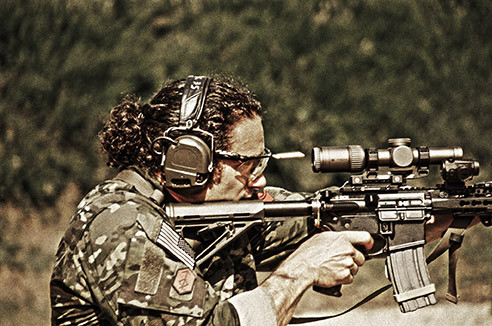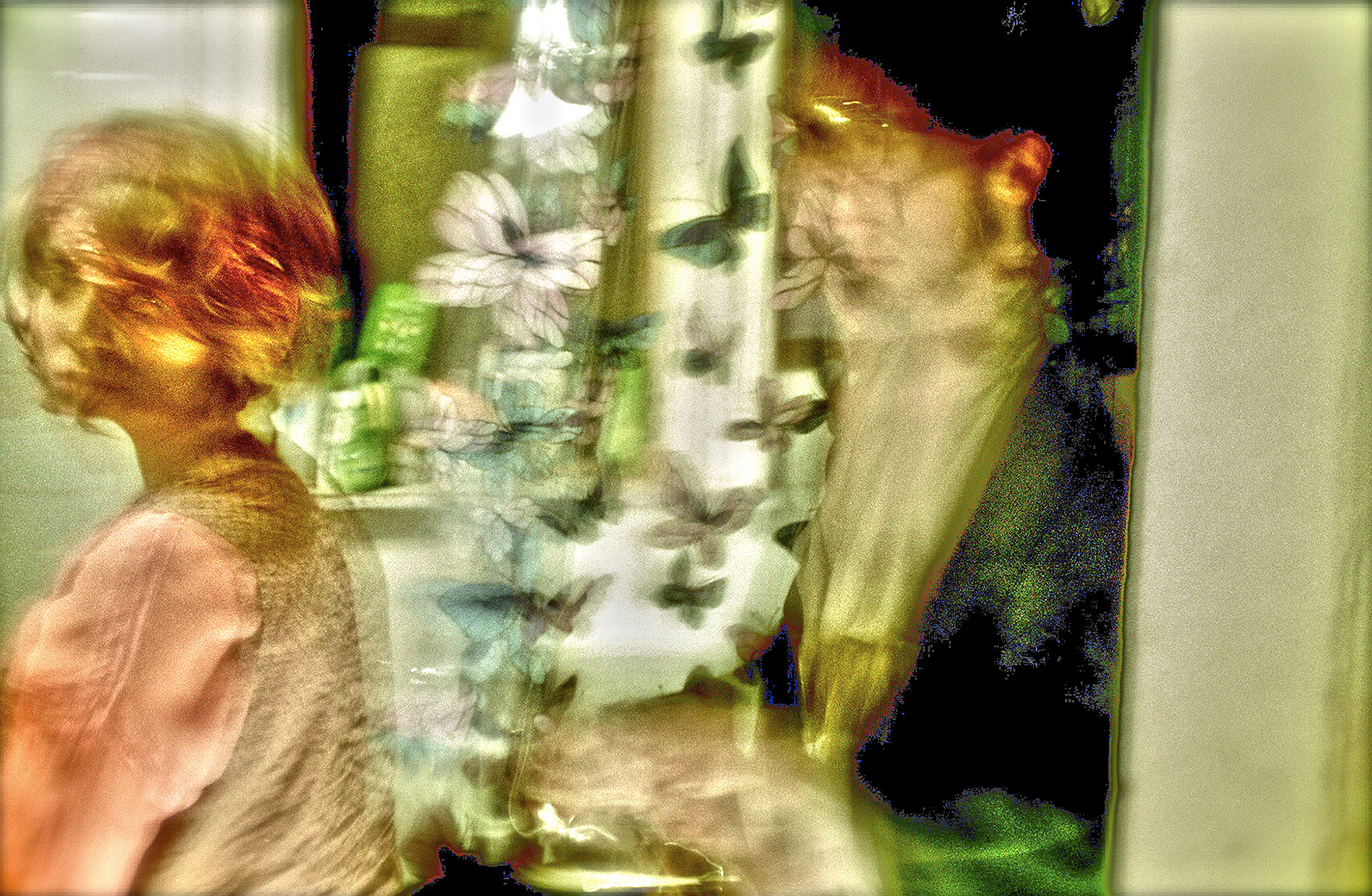John Sharian is a man of many talents. By day, he designs body armor, a role far removed from his life as an actor and photographer. Beyond the typical 9-to-5, he dedicates himself to personal training and cherishes his role as a husband and father. The question naturally arises: how does John Sharian maintain his creative drive amidst these diverse commitments?
His primary creative outlet is film photography. John Sharian describes his photographic process with a unique analogy: “I always liken it to a net: you throw it in and you pull it out…it’s not until you develop the film that you find out what you actually have.” For him, film photography is a method of capturing and preserving moments, only to be rediscovered later with a sense of surprise and renewed perspective.
John Sharian’s journey into photography stems from his background as an actor. He transitioned to film directing while living in the UK, but grew disillusioned with the financial constraints of the industry. The constant focus on monetary aspects and the need to manage large teams led him to seek a more solitary and direct form of creative expression.
Photography offered John Sharian exactly what he was looking for: efficiency and independence. “With the camera, I’m super efficient,” he explains. He values the ability to go out alone, capture images, and handle the entire process from development to digitization independently. This streamlined approach allows him to create on his own terms and at his own pace.
A significant part of John Sharian’s photography is integrated into his daily routine. Traveling to auditions in the city becomes an opportunity for artistic exploration. “I always take a camera and make sure that I take X amount of pictures on my way in,” he shares. His daily bike commute to Grand Central and back provides a constant stream of visual stimuli, leading him to discover and capture photographic subjects along his familiar routes.
The portability of film cameras is crucial to John Sharian’s mobile lifestyle. He favors being “hands-free,” carrying his camera in a cargo or jacket pocket, allowing for spontaneous photography during his bike rides. This preference for minimal equipment reflects a broader philosophy of efficiency and self-reliance that permeates his various pursuits.
This emphasis on efficiency and independence extends beyond photography and into his work designing body armor for special forces. John Sharian notes the parallel: “Those guys are on their own a lot. Essentially, they’re trained to be part of a team, but autonomous at the same time.” This understanding of autonomous operation influences his approach to physical training as well, favoring rudimentary equipment and outdoor environments over traditional gyms.
John Sharian’s training methodology emphasizes independence and functionality, principles mirrored in the equipment he designs. He uses the example of Velcro in military gear to illustrate this point. Velcro’s reliability and ease of use in critical situations, unlike buttons or zippers, highlight the importance of efficient and dependable design in life-or-death scenarios.
 John Sharian photographed in a candid moment, reflects the intensity and focus he brings to his diverse career in acting, photography, and tactical gear design.
John Sharian photographed in a candid moment, reflects the intensity and focus he brings to his diverse career in acting, photography, and tactical gear design.
Reflecting on his unconventional career path, John Sharian explains the transition from acting school to body armor design as a pragmatic decision that evolved into a passion. Returning from the UK with his wife and starting a family prompted him to seek more stable work. Initially intended as a part-time job, the body armor design role increasingly captivated him, especially as he became more involved in the practical training aspects and user feedback.
John Sharian emphasizes the interconnectedness of his diverse activities. “I think the key to doing a lot of different things at the same time is not putting them in compartments,” he states. Instead, he focuses on identifying and leveraging the connections between his various roles, allowing each to “feed the other thing.” He illustrates this with his physical training certification, which arose from a connection within his network and subsequently linked back to his body armor design work and even his surfing hobby.
This holistic approach has also subtly shifted John Sharian’s acting career. While he acknowledges the typecasting towards “hard-ass military guy” roles, he points out that the physical aspect has always been integral to his acting, dating back to his involvement in sports from a young age. He notes, “Acting and sports ran side by side from the time that I was 12.”
John Sharian recounts his formative experience with a Polish theater company that emphasized intense physical preparation. Their rigorous “warm-ups,” lasting four hours, instilled in him the importance of physical exertion as a precursor to performance. This training continues to inform his approach to acting, as he still engages in intense warm-ups before going on stage, finding it essential to feeling “ready to go.”
His training experience with military personnel further enriches his acting, particularly when portraying military roles. John Sharian describes a training trip with high-powered weapons as both an immersive experience for understanding these roles and a prime opportunity for photography. He was fascinated by the proficiency and composure of the special forces operatives, noting the almost dance-like fluidity and placid demeanor of one assassin he observed.
John Sharian finds that being busier actually enhances his productivity. He uses the example of when his family is away, allowing him to dedicate focused time to tasks like film development, digitization, and bookmaking. Creating photography books is a significant aspect of his artistic output, providing a medium for storytelling and a tangible collection to revisit and refine over time.
 A striking black and white photograph by John Sharian, capturing the intensity and mystery often associated with his work and persona.
A striking black and white photograph by John Sharian, capturing the intensity and mystery often associated with his work and persona.
When asked if simplifying his life by abandoning his side projects would be easier, John Sharian acknowledges the appeal of a less demanding existence. “It would be easier,” he admits, particularly regarding his commute and time management. However, he implies that while simplification might be a future possibility, his current multifaceted life is fulfilling and aligned with his priorities, including his family.
He contrasts streamlined efficiency with convoluted processes, referencing his positive experience on “Horace and Pete” with Louis C.K. John Sharian appreciated C.K.’s direct and unpretentious directing style, a rarity in an industry often characterized by excessive politeness and indirect communication. He valued C.K.’s straightforward approach to line readings and performance adjustments.
Conversely, John Sharian shares his experience working with Luc Besson on “The Fifth Element,” highlighting a vastly different, improvisational approach. Besson’s minimal scripting and on-set improvisation demanded actor autonomy and creativity, a stark contrast to C.K.’s precise direction. While appreciating the freedom, John Sharian notes the inefficiency of Besson’s extended production schedule and hands-on involvement in even minor details.
The enduring draw of acting for John Sharian lies in the ability to “lose myself.” He draws parallels between this immersive experience and the mental states achieved through training and photography. The pre-performance anticipation, akin to the adrenaline rush of extreme sports like ski jumping off the Eiger, provides a thrilling and transformative experience.
John Sharian sees a common thread of discipline and systemization running through his diverse pursuits. He emphasizes, “Discipline is freedom,” advocating for accountability and structured effort in all endeavors. He believes that a structured approach, rather than a purely freeform one, is essential for achieving meaningful outcomes.
He distinguishes between “exercise” and “training,” viewing exercise as rote activity and training as a purposeful commitment. For John Sharian, training is directed towards a specific goal, providing context and motivation. Similarly, his photography evolves as he refines his artistic focus, seeking to capture specific subjects and explore their potential uses.
John Sharian approaches all his endeavors with a level of intensity and seriousness, emphasizing the importance of avoiding half-hearted efforts. In his training, he prioritizes client safety and instills a sense of vigilance, mirroring the rigorous protocols of military training. He emphasizes the importance of remaining focused and avoiding casualness to prevent errors and potential harm.
He recounts a poignant story of Special Forces soldiers in a parade who sacrificed themselves to save disabled veterans and military families from an oncoming train. This story of ultimate commitment and efficiency resonates with John Sharian, illustrating the profound connection between these values. The soldiers’ prioritization of others, even in the face of death, exemplifies a deeply ingrained sense of responsibility and decisive action.
Finally, John Sharian offers practical advice for managing a busy life. He recommends incorporating simple yet effective habits, such as using a pull-up bar for quick workouts and integrating exercise into daily routines like bike commuting. He emphasizes the importance of setting daily challenges, like timing his bike rides, to maximize efficiency and motivation.
John Sharian dismisses the concept of laziness, stating, “There are times where I like to relax, certainly, but I like to do something every day. I don’t ever feel bored.” He actively rejects boredom, viewing life as inherently engaging and full of opportunities for activity and creativity.
 John Sharian's photography often captures intimate and reflective moments, hinting at the depth and thoughtfulness behind his multifaceted life.
John Sharian's photography often captures intimate and reflective moments, hinting at the depth and thoughtfulness behind his multifaceted life.
In conclusion, John Sharian’s ability to juggle diverse careers and maintain a high level of creative output stems from a philosophy of interconnectedness, efficiency, and discipline. By viewing his various pursuits as complementary rather than compartmentalized, and by embracing structured routines and focused effort, John Sharian exemplifies a life lived with intention and remarkable productivity.
